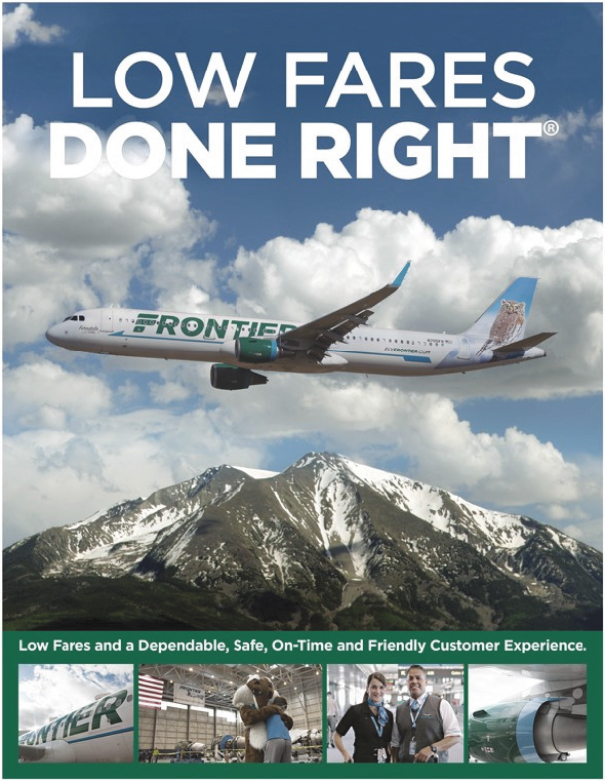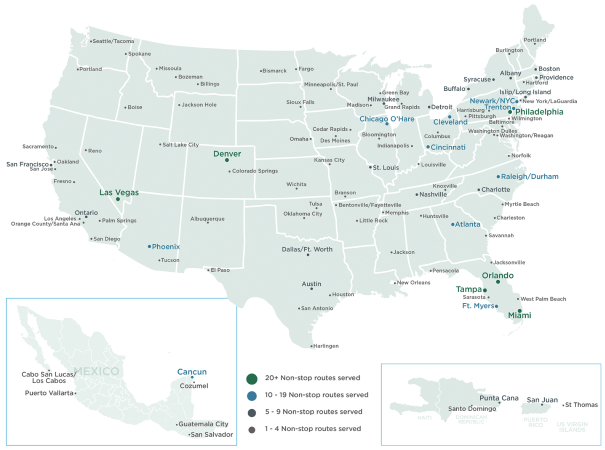Aircraft Fuel. Aircraft fuel expense increased by $51 million, or 9%, during the year ended December 31, 2019, as compared to the prior year. The increase was driven by the 14% increase in capacity partly offset by a slightly lower fuel cost per gallon and the continued shift to larger and more fuel-efficient aircraft.
Salaries, Wages and Benefits. Salaries, wages and benefits expense increased by $88 million, or 20%, during the year ended December 31, 2019, as compared to the prior year. The increase was driven by higher crew levels to support the capacity growth plus the higher pay rates from our new collective bargaining agreements with our pilots and flight attendants ratified in January 2019 and May 2019, respectively, partly offset by the $88 million of costs accrued in 2018 relating to a one-time contract ratification incentive plus payroll related taxes and certain other compensation and benefits-related accruals committed to by us as part of a tentative agreement with the union representing our pilots that was reached in December 2018 and was ratified by the pilots in January 2019.
Aircraft Rent. Aircraft rent expense increased by $91 million, or 33%, during the year ended December 31, 2019, as compared to the prior year, primarily as a result of the net addition of 14 new, larger aircraft during 2019. We had 98 aircraft as of December 31, 2019, comprised of 51 A320neos, 20 A320ceos, 21 A321ceos, and six A319ceos, as compared to 84 aircraft as of December 31, 2018 comprised of 21 A320ceos, 21 A321ceos, nine A319ceos, and 33 A320neos. Aircraft rent expense also increased during 2019 due to the adoption of ASU 2016-02 on January 1, 2019. As a result of the adoption of the new standard, gains from sale-leaseback transactions are now recognized in full immediately upon sale as a reduction to other operating expense within the consolidated statements of operations, and are therefore no longer amortized over the life of the lease. Aircraft rent expense in 2018 includes $18 million of amortization of gains on sale leaseback transactions.
Station Operations. Station operations expense increased by $13 million, or 4%, during the year ended December 31, 2019, as compared to the prior year, due to the addition of new stations and a 13% increase in departures, partly offset by lower interrupted trip expenses subsequent to the ratification of our pilot contract in January 2019. As a result, station operations expense per ASM decreased by 9% during the year ended December 31, 2019, as compared to the prior year.
Sales and Marketing. Sales and marketing expense increased by $20 million, or 18%, and increased 2% on a per ASM basis during the year ended December 31, 2019, as compared to the prior year, with a continued focus on our internal distribution channels. The following table presents our distribution channel mix:
| | | | | | | | | | | | |
| | | Year Ended
December 31, | | | | |
Distribution Channel | | 2018 | | | 2019 | | | Change | |
Our website, mobile app and other direct channels | | | 71 | % | | | 73 | % | | | | 2pt |
Third-party channels | | | 29 | % | | | 27 | % | | | (2)pt | |
Maintenance Materials and Repairs. Maintenance materials and repair costs increased by $11 million, or 15%, during the year ended December 31, 2019, as compared to the prior year. The increase in maintenance, materials, and repairs was primarily driven by an increase in maintenance labor related to the growing fleet. These costs remained relatively consistent on a per ASM basis.
Depreciation and Amortization. Depreciation and amortization expense decreased by $32 million, or 41%, during the year ended December 31, 2019, as compared to the prior year primarily due to reduced heavy maintenance activity related to aircraft returns with our lessors and the sale of our six owned aircraft in the fourth quarter of 2018.
Other Operating Expenses. Other operating expenses decreased by $107 million, or 63%, driven by the adoption of ASU 2016-02 on January 1, 2019. Under ASU 2016-02, gains from sale-leaseback transactions are now recognized in full immediately upon sale. In the year ended December 31, 2019, the gain on sale-leaseback transactions totaled $107 million. We also had a $25 million loss on the sale of our six owned aircraft in 2018. These factors were partially offset by the impact of increased capacity in our business as compared to the prior year.
92




